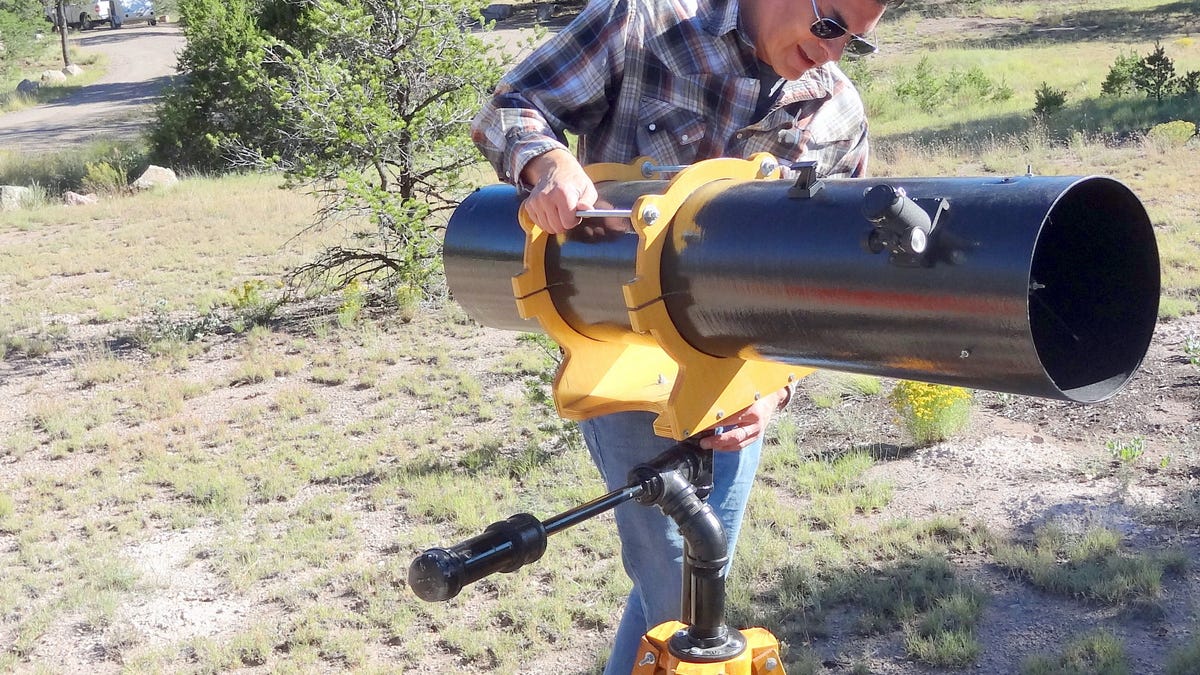Seeing stars: My magical weekend in a dark, dark place
A camping trip turns into an unexpectedly celestial weekend of Milky Way-soaked stargazing in a place with very little light pollution.
I couldn't remember the last time I noticed the dense silver threads of our home galaxy painting a wide swath across the blank black of space. I saw it this weekend near Datil, New Mexico.
It appeared like an owl flying silently through the night. The brightest stars and planets arrived on the heels of the fading orange sunset. Then the lights went out and the Milky Way threw open its arms and declared, "I'm here."
In the dark of Datil
I spent the weekend camping with friends and bandmates at the Datil Well Campground, once a cattle and cowboy watering stop on the Magdalena Trail. Today, the land is sparsely populated. Horned lizards slurp ants off the ground and the hulking dishes of the Very Large Array astronomical radio observatory stretch across the Plains of San Agustin as ragged mountains border the flat lands.
Datil is dark at night. A look at the Dark Site Finder shows the bright saturation of light pollution from the cities of Albuquerque and Las Cruces. But Datil sits in a well of darkness, making it an ideal spot for stargazing.
It's Friday night. The campground is lit only by the subtle glow of battery-powered lanterns tucked inside tents. The Milky Way looks like an unfinished pointillism painting by Georges Seurat. I'm disoriented and can't quite figure out what I'm looking at. It's harder to find the constellations when the sky is so saturated with stars. We locate the Big Dipper and then finally pinpoint the sideways "W" of Cassiopeia, the mythological Greek beauty whose vanity was her downfall.
On Saturday, more friends arrive. They bring guitars, and one of them, Tony Allred, brings a huge orange box, big enough to hide Hoffa.
A telescope arrives
Inside is a homemade reflecting telescope crafted from a hand-ground 8-inch (20-centimeter) mirror from eBay, pieces from a home-improvement store and a few finishing parts from telescope manufacturer Orion. Allred estimates it took him 40 to 60 hours to build the device. "I made every part from scratch except the optics," he says.
That night we look through the viewfinder. While many stars can be seen with the naked eye, there are so many more when peeking through the clarifying eye of the telescope. That famous line from Arthur C. Clarke's "2001: A Space Odyssey" runs through my mind: "It's full of stars!"
I leave the telescope's side and go back to craning my neck at the heavens. A meteor flashes, carving a paper cut across the field of stars. A satellite moves like a star that's lost its moorings. It's cold and the night smells like pinon smoke. It will still be hours until the coyotes call across the junipers. These are moments of quiet magic.
My place among the stars
Sometimes people look up at the stars and feel small, like an insignificant and fleeting breath in a vast universe. But we're not just Earth. We are the universe. I see Mars, a dense red pinpoint glowing among white-hot stars, and know our human-made rovers are rolling over the planet's surface. I feel expanded.
Living in a city has its perks, your vision is limited and distorted, the wonders of the universe drowned out by a cloud of filtering light. Thank goodness for places like Datil where the evening cracks open and pours out its treasures, littering rhinestones across the sky's velvet skin.
My little digital camera was no match for the gleaming night. At first I was sad I wouldn't be able to capture images of stars, but that's OK. No photograph could possibly replicate the sheer sense of wonder of being there in person under that wide obsidian dome speckled with sparkling jewels.
You don't need a telescope (though it's nice) to acquaint yourself with the vast and shimmering skies of our ancestors. You just need your eyes and a dark, dark place.
The Very Large Array, which famously appeared in the film "Contact," sits near Datil.


